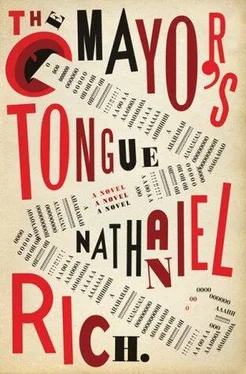Most recently, Owen had begun testing the creature's often promoted medicinal properties. For centuries, seahorses have been prescribed by folk doctors on the Asian continent to treat fever, baldness, rabies, sore throat, asthma, bone fractures, menstrual cramps, insanity, incontinence, impotence, delayed childbirth, and fatigue. Owen was the first Western scientist to examine the seahorse's genetic sequence, and her research had explained the science behind many of these curative powers. To aid in the protection of the threatened species, her organization had sponsored a number of programs to encourage responsible seahorse farming.
Owen hoped to increase awareness of her cause by encouraging home aquarium stores to sell the animal. Her foundation was working to create an incentive program that would encourage private seahorse owners to donate whatever offspring their tanks produced, so that after several generations, the pet seahorse industry might make a significant contribution to the growth of the world's endangered seahorse population.
Agnes explains all this to her chin-rubbing husband as she dumps a plastic baggy of live brine shrimp into her new temperature-controlled aquarium. She has placed the aquarium, much to Mr. Schmitz's consternation, in the middle of the kitchen table.
"It's the only flat surface I have to work with" is Agnes's excuse.
Opaque partitions divide the thirty-gallon tank vertically into four different columns. Each segment contains a pair of mating seahorses, a plastic fern, and a miniature pagoda.
"Why are there Oriental figurines in the water?" asks Mr. Schmitz.
"Those are five-story pagodas of Nanjing," replies Agnes, admiring her creation. She removes the napkin holder and salt and pepper shakers from the table, so as not to distract attention away from the tank.
"I thought it would be in keeping with the spirit of the thing. Isn't it fun?"
Mr. Schmitz frowns and, tucking the newspaper under his arm, heads to his favorite reading chair.
He finds himself staring at a sidebar to the Mollie Owen piece. It explains that the seahorse's largest problem is not that its populations are too concentrated, but that they are spread across great distances. Of all the ocean's small creatures, the seahorse has the lowest population density. When a male gives birth, his fry swim off to whatever crevice they can hide in, usually quite far from home. And when they grow older, they lose their mobility. As a result, lost partners are not quickly replaced. So if a seahorse is caught, its partner is doomed.
With the night settling in outside, and Agnes having tucked herself into bed, Mr. Schmitz plods back to the kitchen to prepare his postdinner snack. A bluish glow spills down the hallway from the darkened kitchen, waves of light playing gently on the walls. Mr. Schmitz feels as though he has walked into an underwater cave.
In the refrigerator, propped on top of a carton of egg salad, is the baggie of brine shrimp, sealed at the top. The white diaphanous creatures writhe their exoskeletons and paddle their leafy legs through the saline solution, hairy caterpillars of the sea. Mr. Schmitz grabs the baggie and turns to the tank, his eyes brimming with turquoise light.
He sees a yellow seahorse nestling its dorsal fin against the top ridge of its pagoda, like a bear rubbing its back against an oak tree. Mr. Schmitz lifts off the top of the tank and dips the bottom of the bag into the water. The seahorse, seeing the brine shrimp, curls and uncurls its tail, puffs out its snout, and wiggles its coronet. Soon its partner emerges from the ground floor of the pagoda to investigate the source of this commotion. The two creatures begin to engage in an elaborate dance. The larger one — the male — circles around the female, wrapping his tail around hers as a man might embrace his partner in a waltz. The male's spine turns darker, its bright yellow seething into apricot, while his torso grows pale. The female seems to show little interest: she floats still in the water, occasionally breaking her concentration to nudge with her snout the plastic baggie containing the shrimp.
Mr. Schmitz cannot take it anymore. With a single flourish, he opens the bag and tilts it so that the hundreds of brine shrimp spill into the tank. To Mr. Schmitz's surprise, the seahorses do not interrupt their dance, but only raise their heads. Whenever a shrimp passes nearby, the seahorse snorts it up whole. The shrimp slides down the tube behind the seahorse's gills, illuminating it with a bright spectral hue, before disappearing into the digestive tract.
All night Mr. Schmitz sits in the kitchen, watching the waltz of the seahorses. The shrimp cling to the pagoda like Christmas lights, and flash like star clusters around the dancing pairs.
Mr. Schmitz wakes up the next morning with his jowl pressed against the side of the tank. Agnes is rubbing his shoulder under his nightshirt, and their miniature ocean is swarming with seahorse fry.
Agata sat on her duffel bag at the tram stop in the empty Piazza Scorcola, her foot tapping erratically against a jagged split of concrete. After some time a young woman roughly Agata's age, with plaited brown hair and a drawn, restless face, started walking back and forth beside her. Agata smiled, and the woman returned the smile gratefully, opening her mouth as if she had something to say, but never actually saying it. Still the tram did not come. A Greek navy ship was docked in Trieste for the week, and as the night progressed, more and more of the sailors returned with local women to a pensione near the tram stop. Upstairs the windows would illuminate and then, several minutes later, darken, and deep laughter would echo through the square. Every few minutes squat Italian cars, rusted and voracious, would accelerate to the curb and then slow into a creep. Each time, Agata politely shook her head and the car sped up a hill, toward the Carso. Agata sensed that there were people in the black windows above the street peering down at her and her brunette counterpart in hungry expectation of some event she could not anticipate. But maybe it was just a feeling, an understandable case of the heebie-jeebies in this nowhere city where everyone seemed to speak a different language.
Agata palpated her temples with her fingers — an old habit of her father's — and wondered what had happened to her that afternoon. She felt like the woman beside her, careening lightly back and forth, unsure and probably a little bit drunk. It was a soft, airy sensation, as if her brain was slowly floating around inside her head, gently bouncing against the walls of her skull like some cranial version of Pong.
"I know how you feel," said Agata, addressing the young woman in Italian. The woman stopped in her tracks so abruptly that her brown loafers planted to the sidewalk with a small squeaking sound.
"Me?" she said, and then laughed. "Of course you mean me. Who else is there? It's so nice to finally meet you. You speak Italian very well." Agata gingerly pushed herself up off her bag and lightly shook hands with the woman, who introduced herself as Stasia, flapping a nervous wave when she said her name. The city had grown quiet and dark. The streetlamp held them in its spotlight.
"Do you know when the tram is supposed to come?" asked Agata. "It's been a long time now."
"Where are you going?" asked Stasia. She was attractive, Agata decided, though she did bear a certain likeness to a small bird: her nose was slender and beakish, and there was very little skin between her nose and her lips, which gave the whole face a pleasing, pinched quality. Her eyes flickered emerald.
"Up to the top of the Carso," said Agata. "Opicina, Trebiciano, Padriciano. . all those roly-poly-sounding names. I'm looking for an old friend. He lives in one of the villages there. I know it's a long trip. I'm in no rush."
Читать дальше












